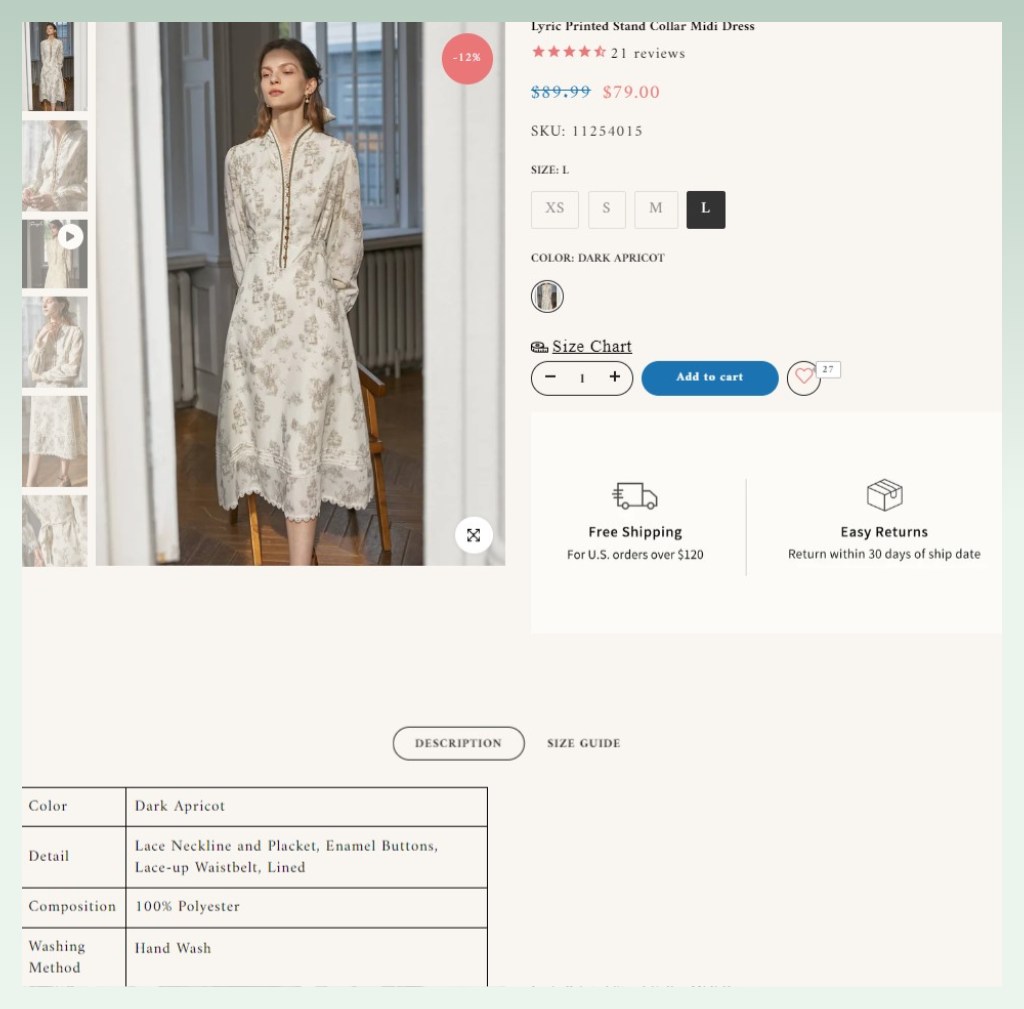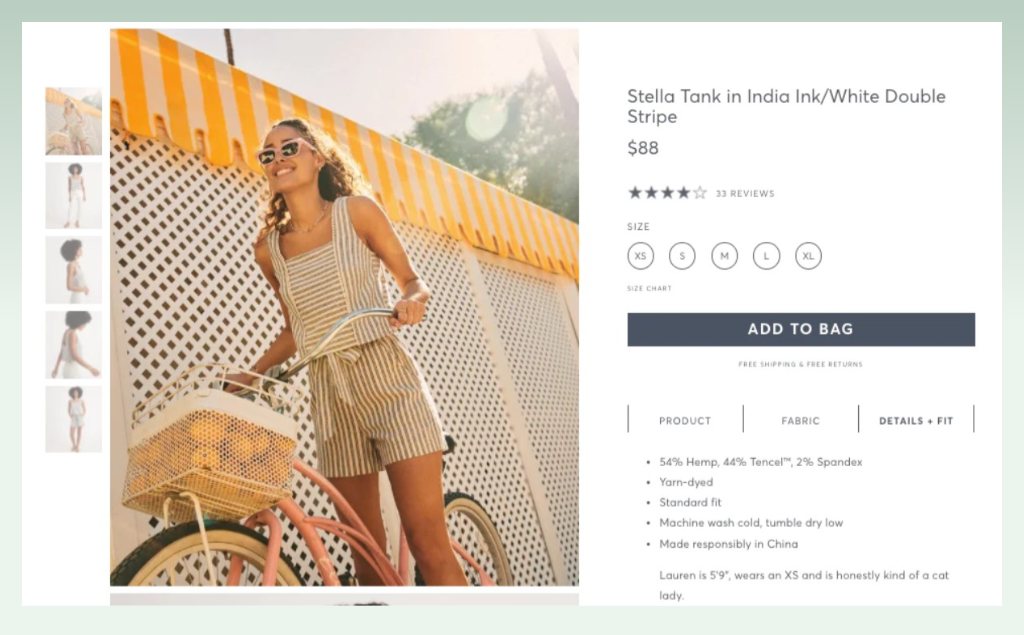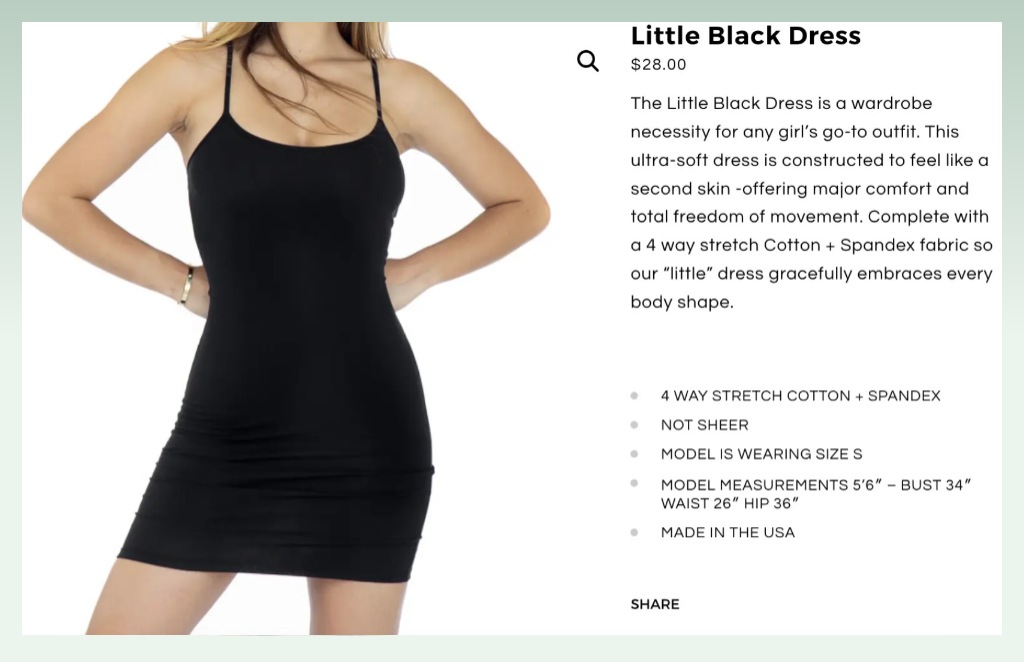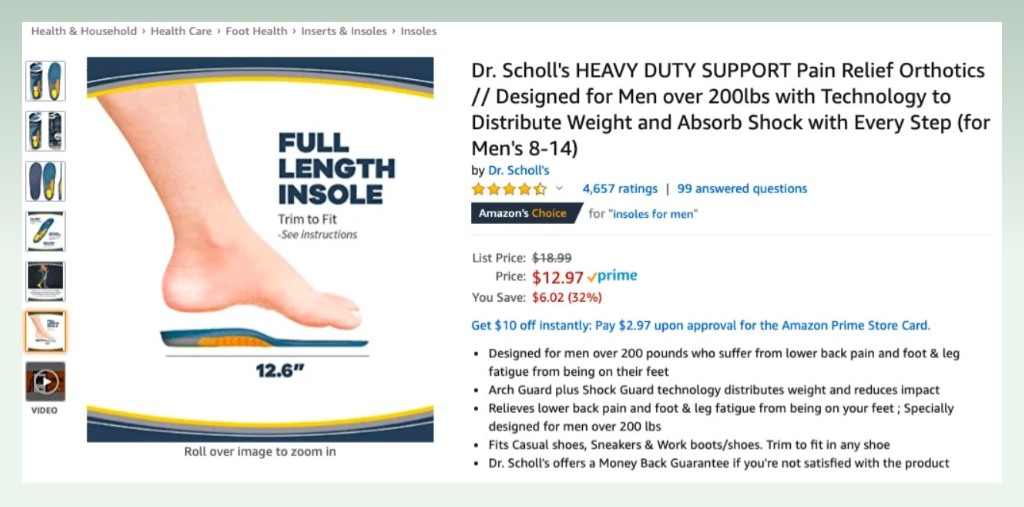Crafting Captivating Clothing Descriptions: 12 Proven Tips

The ability to critically come up with persuasive product descriptions for clothes can greatly influence sales and customer participation in an age full of many online retailers. Customers are highly dependent on these descriptions as a way of enabling them to make guided choices whenever they shop for clothes online. Mastering persuasive, yet engagingly descriptive, writing about the garments thus becomes imperative – ones that not just highlight features but also evoke emotion and kindle desire within potential buyers’ minds. In the end, success achieved is in converting potential buyers into loyal customers reaping its financial gains.
When writing product descriptions for clothing, one should embrace creativity as well as be strategic. Listing the dimensions, materials, and colors of an item – this is not only all that concerns this task. Indeed, capturing the essence of a product becomes number one, and carrying out its value toward possible buyers in a good way becomes equally essential. This complete guide helps small boutiques and established fashion retailers with the needed tools and strategies to let their clothing business touch new pinnacles.
1. What’s a product description of clothes?
1.1. Definition
Essentially, clothing descriptions provide customers with information that they can directly experience from shopping in a brick-and-mortar store. Imagine it as one that acts as a virtual salesperson, enticing shoppers to make a purchase by highlighting the features, quality, unique style, and competitive price of the clothing item in question. Going further, this “virtual salesperson” can also provide customers with the number of products in stock, other alternatives in case the product is out of stock, and even suggest promotions or discounts that engage the customer interest.
1.2. What should a fashion product description include?
The description must be informative and attractive but also address the needs and wants of the targeted consumer by including several important components. Describe the aspects such as the name of the style, design, color, size, and material of the clothing. Furthermore, the fashion product description should include information about extra stretch or fit if any, and also provide supplementary measurement charts because sometimes brands have varied measures of the same size. Some further extra information that is needed to make your products appear attractive to customers includes brand, country of origin, and care instruction.
1.3. What is a bad example of a product description?
If you are a customer who is constantly active on eCommerce platforms, there is a high chance that you have at least once encountered a vague, amateur-like, poorly-written product description for clothes that makes you wonder how the store owner could have the audacity to own an online store with such a terrific writing ability.
For example, ”Blue shirt, free size, good material. Contact for more information.”
It doesn’t need to be pointed out to understand that this clothing description is even more obscure than some people’s future. What is the price of this shirt? “Free size” here applies to which body shape, what weight, and how can we be sure when even the same brand sometimes has different size charts? What standards is ”good material” based on, and if the material is not clearly stated, how can the buyer know how to properly care for it?
That is if anyone is willing to buy a product that is described in a way that lacks detail and is not at all attractive. And not to mention, contact for more information? This is clothing, not real estate.
1.4. What is a good description of fashion?
Please never think of making the same mistake as the example above. We’ll give you an example of a wholly remarkable product description for clothes:
”Take your wardrobe to a new level with our luxury navy blue cotton shirt, made of expensive, durable, and breathable cotton which gives it a sense of fashion but at the same time offers maximum freshness and relaxation. Sharp stitches are seen along with nice finishing workmanship. The attention to detail in this shirt will truly be appreciated by you.
Different sizes with detailed measurements for proper fitting are waiting for you to select. Wherever you choose to wear it, this is a classically designed shirt that remains fashionable forever.”
2. Why is a clothes description important?
Basically, product descriptions arise from the fact that customers do not have the opportunity to try the product in the store. Sometimes you don’t sell because you’re passionate about it, so in the end, what matters is making the sale. In an age where many brands even have features that allow customers to “try on clothes” online, you won’t be able to compete if you don’t have the ability to change your customer’s mindset from “That’s a nice dress” ‘ to ”I have to buy that dress’’.
In fact, the store’s relationship with customers here is like a win-win situation. You don’t need to have a physical store to display products, and customers don’t need to come to the store to try on clothes. You need to have great product descriptions that make customers feel like they are trying the product at the store. Because if you can’t, someone else will. And then they will also collect your potential customers and revenue.
3. 12 tips for writing clothing descriptions that drive sales
3.1. Focus on your target audience
What type of customers do you intend to target? Next, try positioning yourself into your customer’s shoes for you to fully comprehend what matters to buyers of the same product: Which fashion brands are their favorite? Do they follow trends? Are there any dress codes in their workplace? Is it the quality of the product you offer for them, or how trendy they find it? How exactly will it appeal to their feelings and interests concerning purchasing these clothes that you offer?
Do research on how your competitors describe their products. This allows you to engage in market research and competitor targeting, which involve identifying keywords and terms with relevant connotations. It is wise that you check on customer reviews about similar products from other companies. Do this to help you grasp the critical factors that attract buyers, therefore import the suitable product description for clothes.
3.2. Highlight the features of your clothes
In making product descriptions for clothing, one should stress out what makes you exceptional or extra special. It’s true that enumerating the fundamentals is required, but the best description should emphasize the advantages that your clients could derive from your products. It is still the same cotton shirt, but in case you indicate that it is an eco-friendly and ethically produced cotton you will probably be able to grab customers’ attention. Therefore, you have highlighted how your product is differentiated from other stores.

3.3. Include accurate product description
Honesty is an integral part of any business. Don’t hype your product – if it needs hand washing, inform consumers directly, and in case it advises against drying it in the strong sunlight, mention that as well. Do not hide or sugarcoat the specifications of an item just because you’re afraid of not selling it – after all, care instructions are still among the basic requirements that a clothes description should have. Not to mention, failure to explicitly explain these features will risk you and your store to negative customer reviews.

3.4. Use attention-capturing words
Since customers cannot directly feel your product – cannot see it with their own eyes or touch it with their hands, using motivational & persuasive adjectives and phrases can attract customers’ attention right from the first line and engage them to read your clothing description completely – and maybe other product descriptions in your store as well. So you are one step closer to the goal of turning your website’s visitors into potential customers.
Here are some examples of commonly used sensory phrases & adjectives used for motivational and persuasive purposes:
For dinner/party dresses, you can use words like:
- ‘radiant’,
- ‘magnificent’,
- ‘gorgeous’,
- ‘rich’
- ‘muse’
- ‘fabulous’
For high-end brands, phrases like these would work well:
- ‘avant-garde’,
- ‘sophisticated’,
- ‘panache’,
- ‘high-street’
- ‘in vogue’
- ‘vintage’
3.5. Remember your brand personality
A product description is nothing but an extension of your long-term marketing campaign, meaning it should be consistent throughout. If your brand is humorous, then you’re free to go wild with your product descriptions – but remember that humor and satire are different, just as regional humor tastes vary. If your brand creates trust and a friendly atmosphere with customers, then write a description that feels like a person is communicating with you as you browse the store.

3.6. Characterize your clothing
Beauty and relevant product descriptions for clothes can inspire people’s imagination as well, and those descriptions provide opportunities to represent different points of view. After all, it is still necessary to prove that these clothes would help them become whatever they desire to be.
How can your store’s clothing help one become a muse, the next-door guy, the artist, the athlete, and so on? Again, you have to apply adjectives as they open the door to making your product meet the personas of your audience.

3.7. Keep it simple and clear
Storytelling to describe products can be an effective method for grabbing customers’ attention; but an overly lengthy paragraph would only cause general confusion, inconsistency, and make it difficult for the reader to continue throughout until the end.
- Short words, short sentences, short paragraphs
Ensure that it is as brief but clear as possible. Instead of using complex vocabularies that might be ambiguous to the public, you should use simpler terms. Use simple clear words that can be understood, in case you target international customers that English may not be their native language.
- Break information into chunks
Use subheadings and list out descriptions, along with bullet points of salient points. It will facilitate movement through the content for readers.
- Use short, catchy, and enticing product names
Consider using descriptive words and adjectives that should be able to stimulate curiosity and provoke. Give catchy product names related to their special designs. Avoid long and complex names which may be difficult to remember.
- Ensure white space in the copy
Ensure there is adequate white space between paragraphs, or separate sections as the description ought to add visual value and be readable either in print or on a screen.
- Make use of bullet points for specifications
Using bullet points, outline relevant information such as size, color, material, care instructions, etc, as it is a good format to ensure that prospective customers can flip through it fast and consider it in comparison to other available options. Ensure that you maintain clarity of the bullet points so they are short.
- Keep the description concise
Describe the product as detailed as possible, but in simple language. Only focus on the notable features of the outfits and avoid including unnecessary details and too many drawn-out descriptions that may be boring to read.
- Use a font size that’s easy to read
Use a suitable font and avoid small font types. Consider font size preference and readability relative to the targeted group. Ensure that the description is easy to read, try out various test devices, and change font size if needed.
3.8. Be mobile-friendly
Today’s era witnesses an increase in the number of smartphone users. Hence, ensure your online store – in general – and the product descriptions – in specific – are compatible with smartphones and other mobile devices, such as tablets. It must be scannable, using the right font, among other characteristics, so that customers can shop with their mobile devices everywhere.
3.9. Optimize for SEO
Without optimizing your store’s SEO, search engines cannot find it, and your store will be rendered invisible. Hence, your fashion product descriptions must contain words that the search engines will crawl your product.
The basic thing that you can do regarding your store is use simple and user-friendly keywords that customers may key into the keyboard while searching for what they want. Using the right keywords, your product will be explained in the best possible way, and chances are that someone looking for this kind of product can also discover your shop.
3.10. Provide social proof or credibility statements
In particular, customer reviews serve as testimonials that could attract potential customers. Provide customers’ feedback, especially positive and satisfied ones, as such statements can portray the good sides and also help the customer see the clothing in their minds.
In addition, it is also essential to provide the names of influencers or celebrities who have used or supported your brand, as well as links to the reviews posted by them. It creates a powerful feeling of hope and trust among prospective purchasers. Additionally, if you work with respectable partner organizations, collaborate with well-known designers, or have received some certification confirming that you offer high-quality products, indicate such links in order to reinforce the authority of your brand.
3.11. Use complementary images and mixed media
In addition to high-quality images, if your product requires a clearer description of the attributes, then use diagrams or videos. But don’t overuse or combine all of the above media types into the same product description. A diagram can be used to show the height of a shoe sole or the thickness of a winter garment, while a video can be used to highlight a dress from different angles that an image cannot.

3.12. Test multiple description types
Undertake various tests to measure how varying description types affect sales and customer reactions. Firstly, draft a brief account explaining the design, composition, and exceptional elements of the clothing. Keep track of every sale and visit a product page within this early trial stage. After collecting enough data, modify the description or reformat the description and decide whether it brings a better or worse outcome compared with the first testing. Through keen analysis of sales as well as product page visit stats, brands can determine how best they should craft an appealing description of a product to boost conversions and customer interaction.
4. Free product description template for clothing
Before moving towards creative writing in product description for clothes in your store, you can consider the template below to be your guide, as it has included the quintessential main ideas that a clothing description – in particular – and product description – in general – should have
- Tagline: This can serve as a motto of a particular product – a simple one-liner or sentence that catches a customer’s eye but doesn’t go too deep in detail.
- Teaser: Give a brief introduction to your product, one that summarizes the answer to the question, “Why on earth should anybody bother their mind and money about this product?”. The section is usually 1 or 2 paragraphs, which you can make longer, but you have to break it down into lines so as not to overwhelm buyers.
- Specifications: This is where you answer the question on how the product works. Format it into a bulleted point for easy reading. Make sure you reach 4 points at minimum – in this case, you can mention the material type, the size, and other unique aspects of the product.
This three-part template is applied in every eCommerce type although the specific formatting might be adjusted depending on how your website looks. However, here are the elements of engaging description that will help raise the conversion of your brand.
5. Top things to avoid to create an effective product description for clothing
When writing a fashion product description or any product description for online platforms, there are some traps that should be avoided.
5.1. Jargon and technical language
Jargon, slang, or technical terms should not be used, as this is not the place for you to demonstrate your expertise in any given field. Think about a situation where a customer sees some confusing technical term in the description, and between researching that on Google or contacting customer service, and choosing options from another store, no doubt that they will obviously choose the latter.
Using slang or jargon is sometimes used by local stores, but if you want to target a larger customer base than local customers – for example, foreign customers – then stop using those specific terms.
5.2. Exaggerations and hype
Avoid overhyping or being too dramatic in the description of your products; it is a common trick used by fraudulent stores where the descriptions tend to be unrealistic or overstated, which may make the customers think they are being tricked into buying fake goods or overpriced ones and eventually. Present the features and benefits of the clothing item honestly and sincerely.
5.3. Lack of specifics
Also, ensure you do not exaggerate by being ambiguous. Information on its size, color, material, and origin is a must. Explain in detail all those extra things that customers need to know about the product including care instructions, elasticity and tightness, buttons or zippers, and whether it comes with a bag, etc.
5.4. Neglecting the customer’s needs
Provide sufficient observations on the customers to allow you to personalize the description to match their worries, demands, and pain points about how the clothing product can satisfy their special requirements. In order to ascertain what the customer looks at when shopping, you need to think like a buyer.
5.5. Ignoring SEO best practice
Sometimes SEO is just a pain that prevents you from doing what you like – creating humorous product descriptions and other exciting content, for example. Yet not complying with SEO rules can make your product’s description undiscoverable and the worst-case scenario is that your store is made invisible. So, consider the benefits and make sure your content is optimized for search engines so that it can lead to more organic traffic to your product page and improve your chance of winning customers over.
6. Great clothing description examples
6.1. Girlfriend Collective
Check out this Girlfriend Collective bra. Friendly tone? Checked. Extra specific details? Checked. Bullet points? Checked. Attracted adjectives? Checked.

It also highlights the product’s convenience – working out at 5:00 and being ready for a ”Zoom Gala” at 5:30 – perfect for work, parties, and sports. It’s fitting that the company’s target customers are mostly active women who love nature. Look at all those statistics on recycled materials being stated accurately.

6.2. Mango
Take a look at an example of this best-seller category clothing description from Mango. The descriptions are broken down into concise keywords, which is a common feature in most of their descriptions – great for customers who like to skim and scan the description to find their preferences. The clothing composition is clearly stated.

This type of description shows that their products are accessible since their target audience is not high fashion-oriented customers who expected some very sophisticated product descriptions. Their fashion can be bought by ordinary people, even teenagers living on their parents’ allowance or students with student loans that are unclear when they will be paid off.
7. Conclusion
Finally, as stated above, well-written descriptions of clothes are critical for attracting the interest and confidence of clients. Through using descriptive language, giving a correct description, and emphasizing on the special aspects of the clothing articles, sellers are able to adequately explain the worthiness and appeal of their merchandise hence they stand a chance of selling those clothes.


